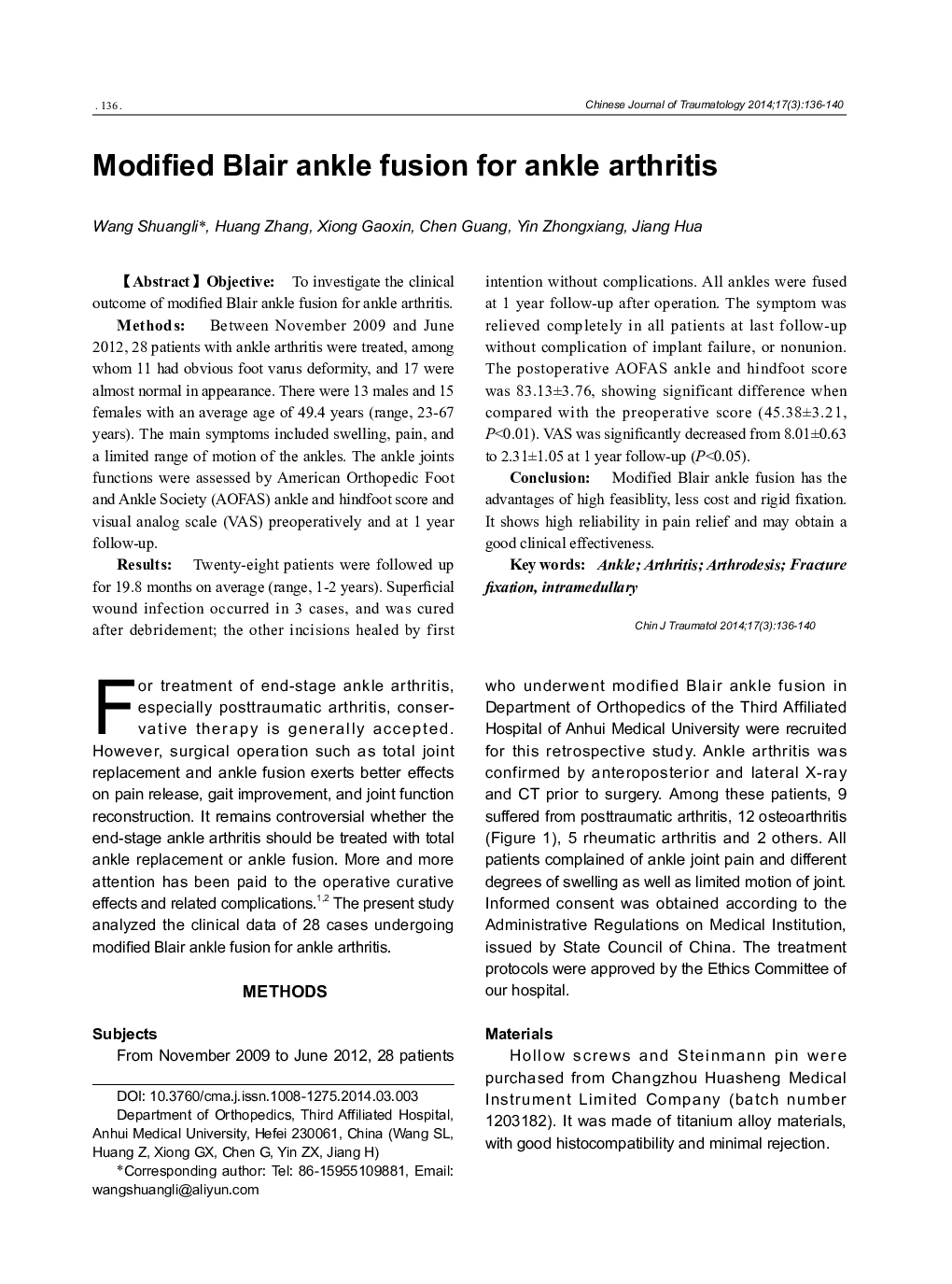| Article ID | Journal | Published Year | Pages | File Type |
|---|---|---|---|---|
| 3107567 | Chinese Journal of Traumatology | 2014 | 5 Pages |
ObjectiveTo investigate the clinical outcome of modified Blair ankle fusion for ankle arthritis.MethodsBetween November 2009 and June 2012, 28 patients with ankle arthritis were treated, among whom 11 had obvious foot varus deformity, and 17 were almost normal in appearance. There were 13 males and 15 females with an average age of 49.4 years (range, 23-67 years). The main symptoms included swelling, pain, and a limited range of motion of the ankles. The ankle joints functions were assessed by American Orthopedic Foot and Ankle Society (AOFAS) ankle and hindfoot score and visual analog scale (VAS) preoperatively and at 1 year follow-up.ResultsTwenty-eight patients were followed up for 19.8 months on average (range, 1-2 years). Superficial wound infection occurred in 3 cases, and was cured after debridement; the other incisions healed by first intention without complications. All ankles were fused at 1 year follow-up after operation. The symptom was relieved completely in all patients at last follow-up without complication of implant failure, or nonunion. The postoperative AOFAS ankle and hindfoot score was 83.13±3.76, showing significant difference when compared with the preoperative score (45.38±3.21, P< 0.01). VAS was significantly decreased from 8.01±0.63 to 2.31±1.05 at 1 year follow-up (P< 0.05).ConclusionModified Blair ankle fusion has the advantages of high feasiblity, less cost and rigid fixation. It shows high reliability in pain relief and may obtain a good clinical effectiveness.
